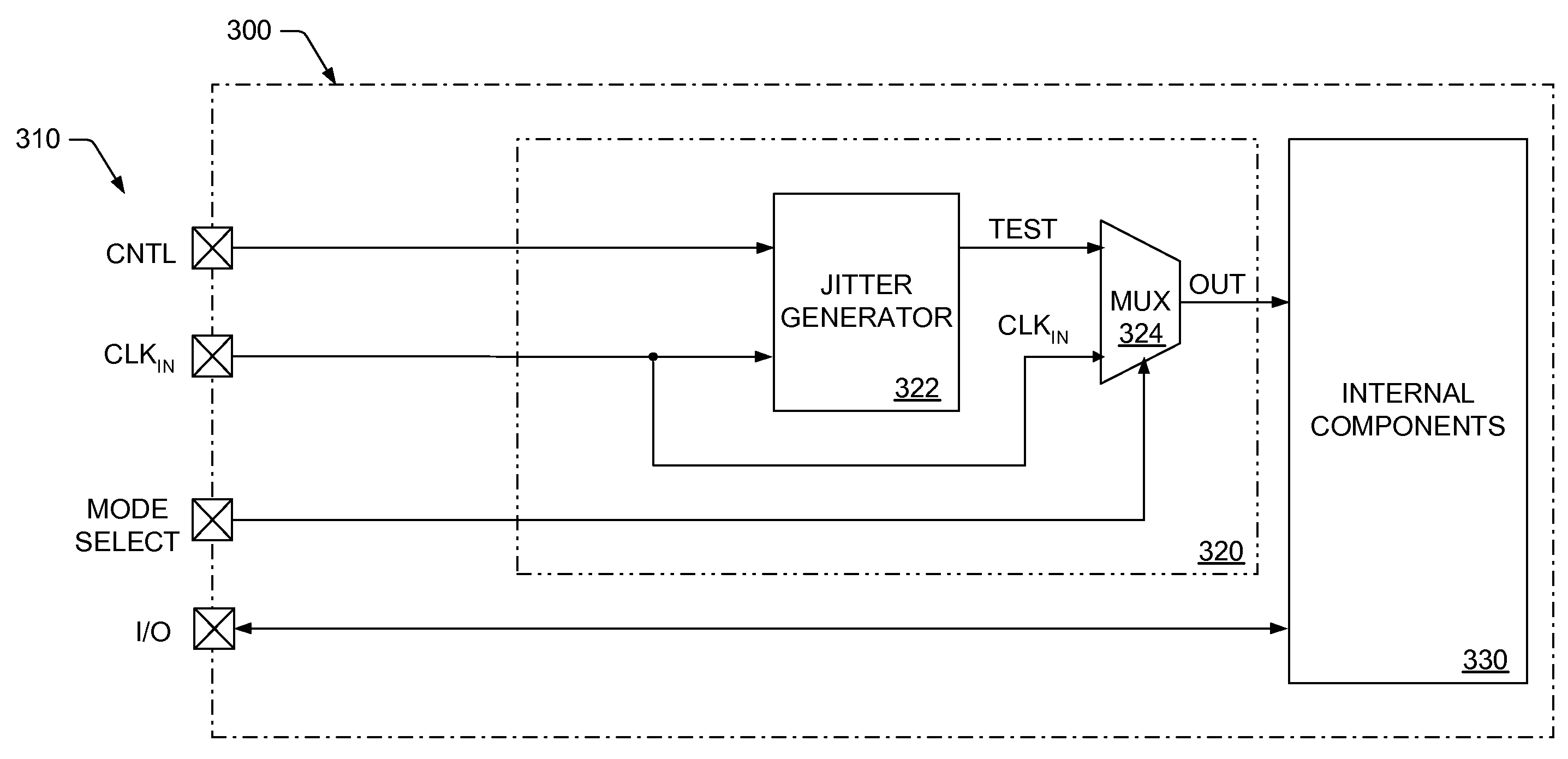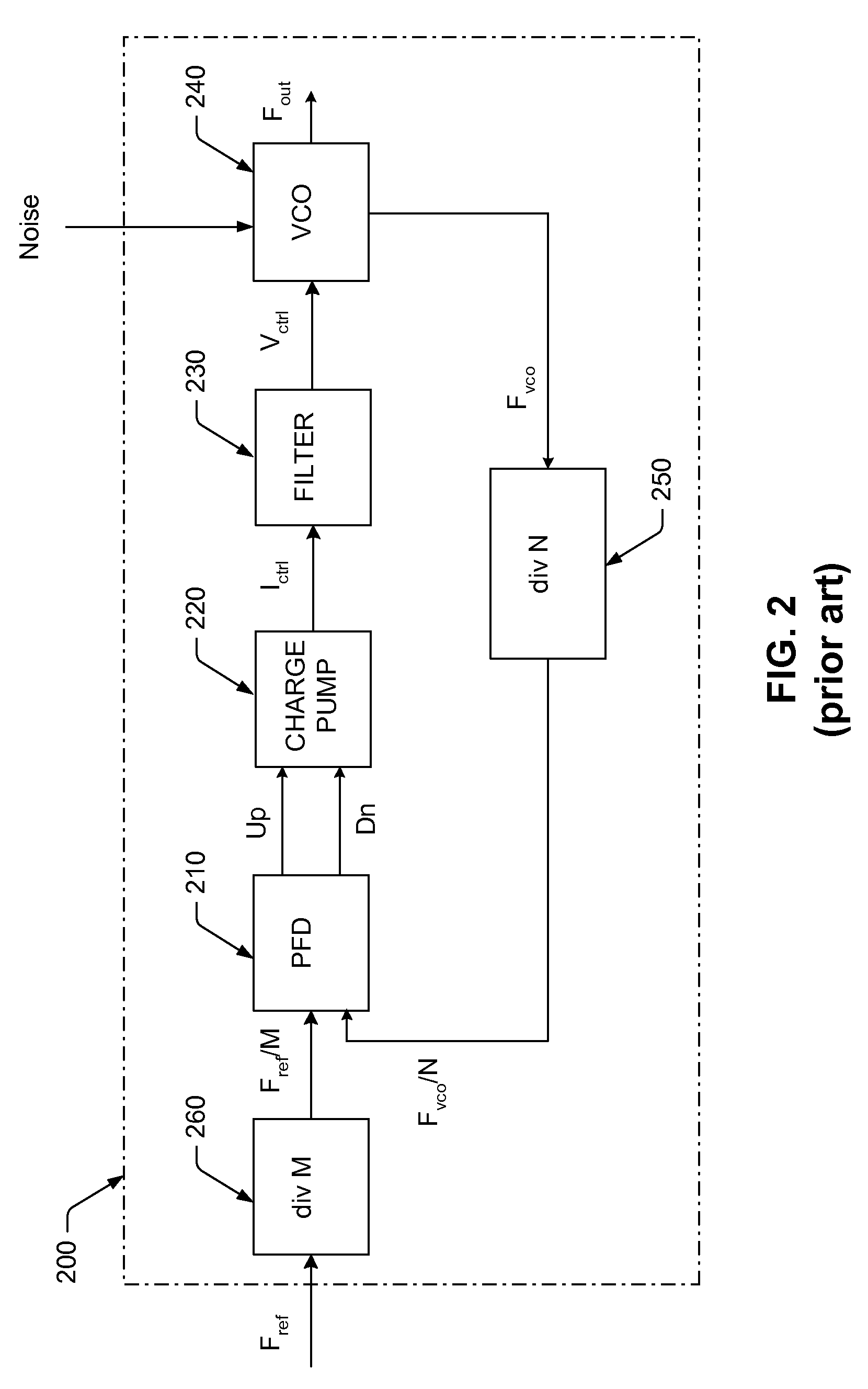Test Circuit, System, and Method for Testing One or More Circuit Components Arranged upon a Common Printed Circuit Board
a test circuit and printed circuit technology, applied in the field of integrated circuits, can solve the problems of receiving data signals that are “jittery” relative to the clock signal edges, receiving data signals, and receiving data signals
- Summary
- Abstract
- Description
- Claims
- Application Information
AI Technical Summary
Benefits of technology
Problems solved by technology
Method used
Image
Examples
Embodiment Construction
[0041]Exemplary embodiments of a test circuit are shown in FIGS. 3-5. In general, the test circuits described herein may be arranged upon a monolithic integrated circuit (IC) chip or system board (e.g., a printed circuit board) for testing the design margins of any component that may be included within the IC chip or system. For example, the test circuits may be used to determine the jitter and / or duty cycle distortion (DCD) tolerance of an internal component, whose timing is critical to the overall operation of the chip or system. Examples of internal components requiring (or benefiting) from jitter and / or DCD tolerance testing may include, but are not limited to, serial high speed data buses, parallel data buses, and the skew in clock distribution systems. In addition to jitter and DCD tolerance testing, the test circuits described herein may be used to fix design timing margins by changing the clock and data phases.
[0042]Unlike many conventional techniques, the test circuits show...
PUM
 Login to View More
Login to View More Abstract
Description
Claims
Application Information
 Login to View More
Login to View More - R&D
- Intellectual Property
- Life Sciences
- Materials
- Tech Scout
- Unparalleled Data Quality
- Higher Quality Content
- 60% Fewer Hallucinations
Browse by: Latest US Patents, China's latest patents, Technical Efficacy Thesaurus, Application Domain, Technology Topic, Popular Technical Reports.
© 2025 PatSnap. All rights reserved.Legal|Privacy policy|Modern Slavery Act Transparency Statement|Sitemap|About US| Contact US: help@patsnap.com



